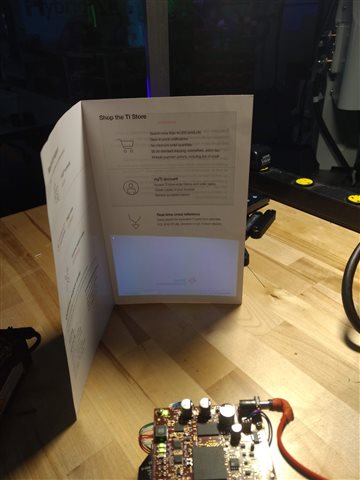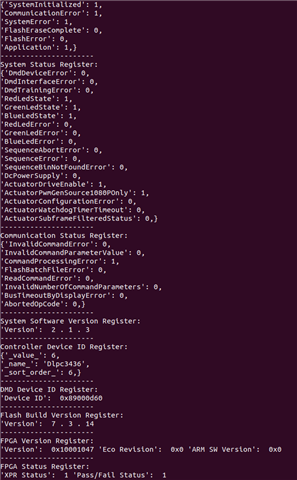Hello,
I have recently been trying to use the the DLPDLCR230NPEVM. When I run the python script init_parallel mode, I get a black screen with a single dot in the upper left hand corner. I am NOT running my PI in headless mode. I have configured my raspberry pi setup + DLP accordingly and tried the following:
1.) I used the provided TI config with the minimum frame rate settings
2.) I have installed WiringPI + enabled i2c on my raspberry pi. I'm relatively confident that the i2c.py script has been modified to reflect the respective /dev/i2c-**
3.) I have disabled screen blanking on my raspberry pi
4.) I have reflashed the firmware and img on the dlp controller + fpga
5.) I can cycle through all the test pattern images in the sample scripts provided
6.) I've messed around a little with the GPIO drive strength, however I do not think that is the issue?
7.) Ive tried specifying my export DISPLAY=:0. This did not change the behavior
I've taken a break from using this product for about a year, have come back to using it, and have both a newer + an older DLPDLCR230NPEVM. I had previously gotten the older DLP to work, but with a new set of Raspberry Pi's I am unable to get them to work... I've attached an image of the behavior. Any help or ideas is appreciated...
Thanks,
Tadek




